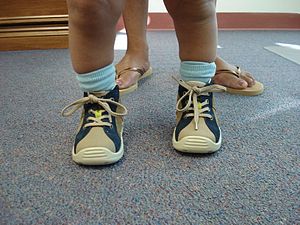By Dr. Steven Warfield
This is the time of year when
the long, hot Florida summer begins to give way to autumn, a time when the
leaves start to turn color, a time when the kids go back to school. So what better time to get back to the basics
of chiropractic care? While modern
chiropractic medicine utilizes everything from ultrasound to laser therapy, at
the heart of chiropractic therapy beats a heart of old fashioned hands on
treatment.
Historical accounts of the
medical use of spinal manipulation can be traced back more thousands of years
to the Chinese. The “Father of Medicine”
Hippocrates used similar techniques in ancient Greece, as did the Egyptians at
a time when they were building the pyramids. (Talk about a job that could give
you an aching back.) So the basis of
chiropractic care is nothing new.
In the US, chiropractic medicine
got its start on September 18,1895 when Daniel Palmer gave the world’s first
chiropractic adjustment to Harvey Lillare. At its heart, chiropractic healing
concerns itself with the treatment and prevention of neuromuscular
disorders. Therapies include joint
adjustment and manipulation this is designed to correct any anomalies in the
spine known as subluxations.
At its simplest, a subluxation
occurs when one or more spinal vertebrae move out of their correct position and
in so doing produce pressure that can irritate nerves and cause the muscles and
other soft tissue to become imbalanced. Since
spinal nerves radiate from every vertebra, this pressure can cause irritation
that can cause these nerves to malfunction, thus interfering with the signals
that travel over the nerves. Since the
central nervous system controls and coordinates virtually every function of the
body, any interference with nerve function creates pain or dysfunction in
various parts of the body.
Chiropractors undergo years
of training in order to be able to correct subluxations. To treat this condition, the chiropractor
will manually manipulate the spine, applying a precise amount of directed
pressure either by hand or by using a specialized instrument such as the
ArthroStim. (See video below) This
manipulation is designed to restore normal position to the vertebrae thus
eliminating the subluxation and restoring balance to the spine.
When the spine gets out of alignment,
not only does this affect our posture, it also starts a kind of domino effect
as the brain tries to restore balance by causing the muscles, tendons and
ligaments to compensate by radically altering their tension. This not only produces more stress on the
system, but it can also cause yet more spinal complications that can result in
pain. Tissue injury can be caused by a
traumatic event such as an accident or through repetitive stresses caused by
everyday wear and tear on the body. Manual manipulation not only restores the
spine to balance, it also restores the soft tissue to its intended tension,
thereby alleviating both pain and muscle tension.
While most people seek
chiropractic care for back pain, the fact of the matter is that a number of
other maladies can be caused by spinal subluxations including the following:
· Autoimmune
Dysfunction
·
Clinical Depression
·
Computer Neck
Syndrome
·
Emotional
Problems
·
Migraines
·
Tendonitis
If you or anyone you know is
experiencing any of the symptoms above, I urge you to make an appointment with
your local chiropractor. He or she can
help you correct the underlying issues associated with these conditions in
order to restore the spine to its ideal function and in so doing regain control
of your life.
Dr.
Steven Warfield and Dr. Dave
Edenfield are part of the team of doctors and
therapists at http://endyourpain.org and http://chiropractor-jacksonville-fl.com who are dedicated to helping you and your family
lead healthier, happier and pain-free lives.








